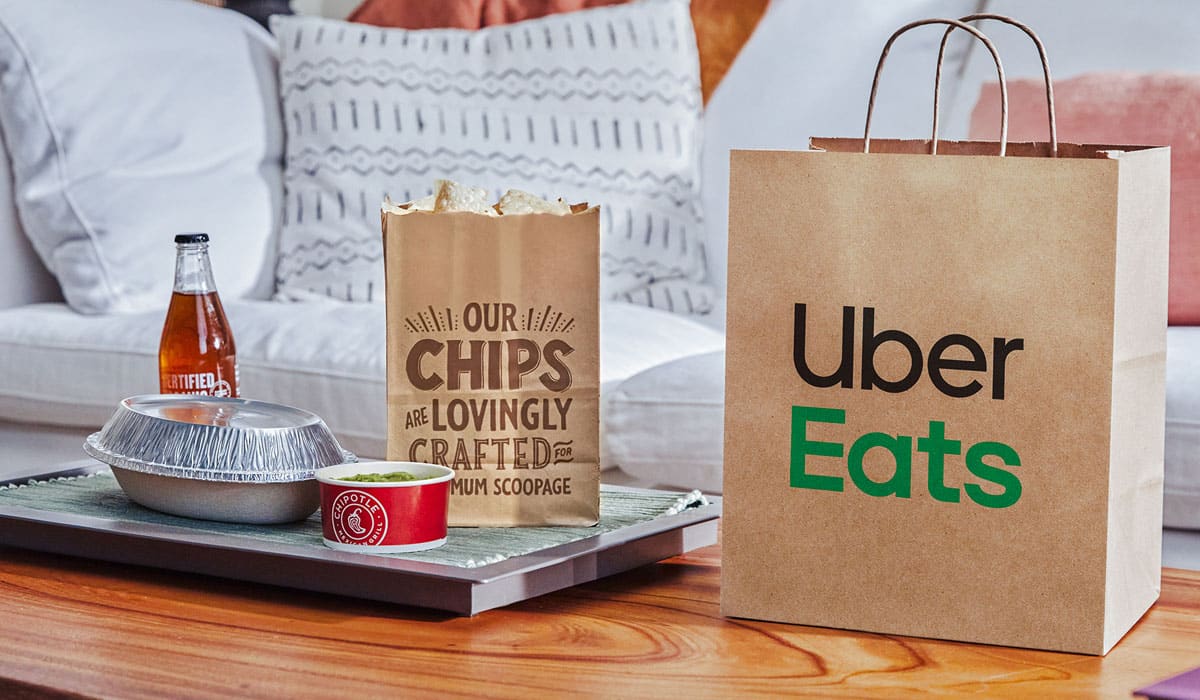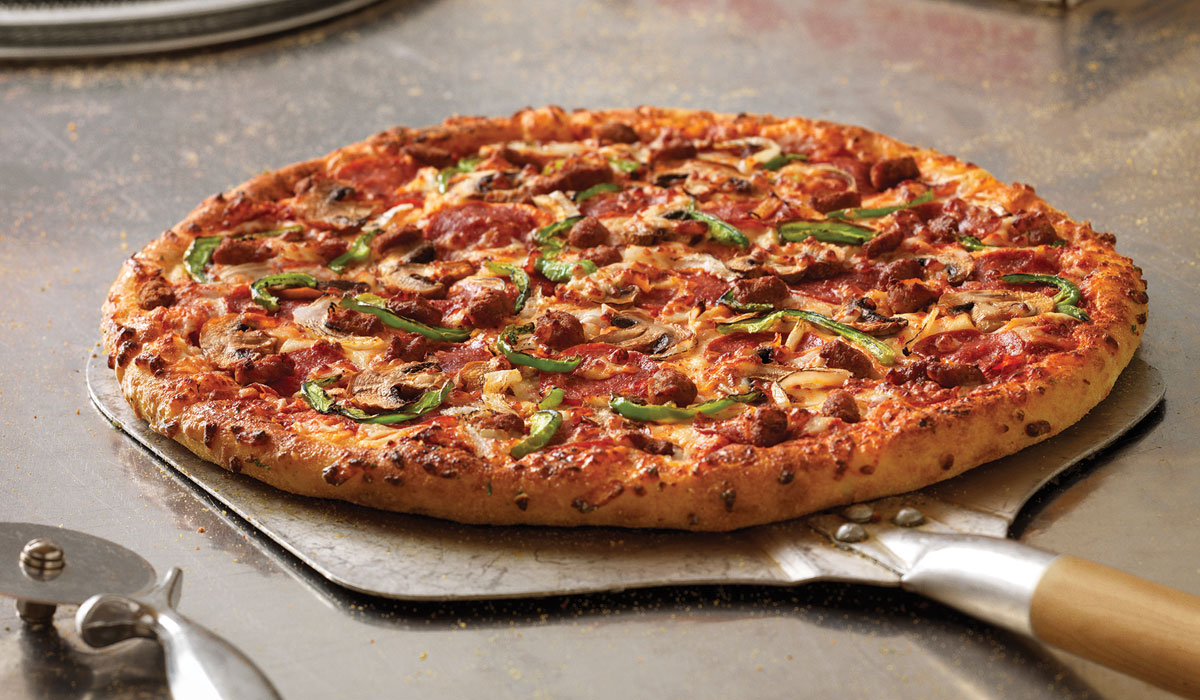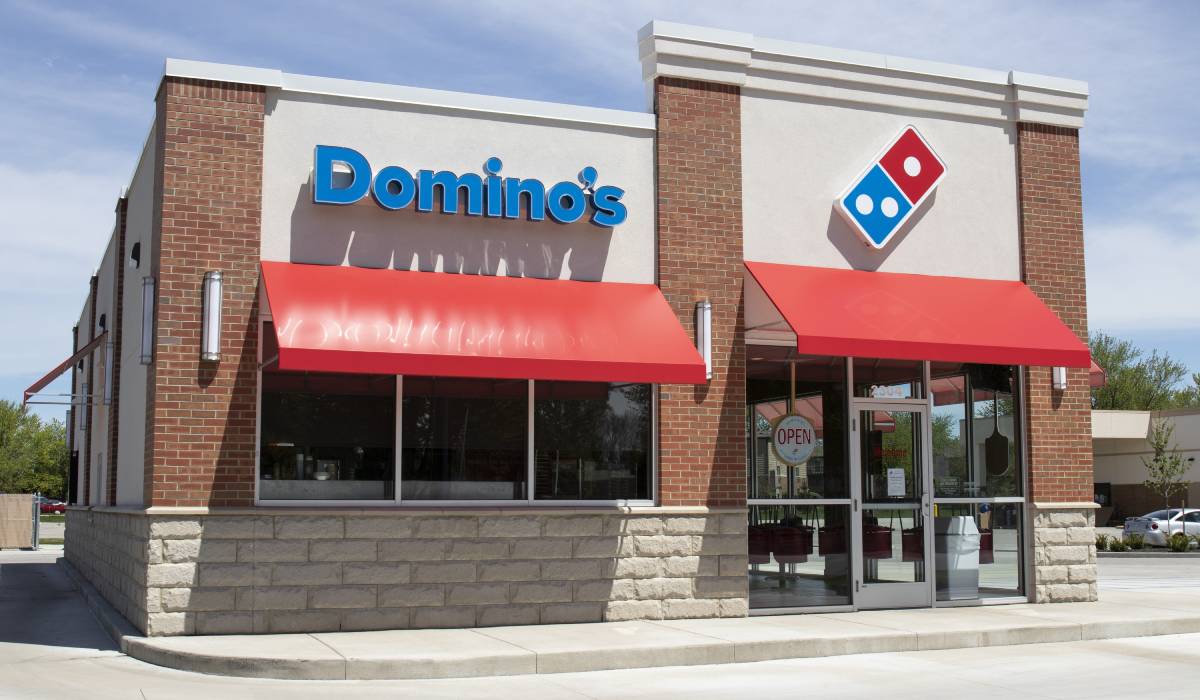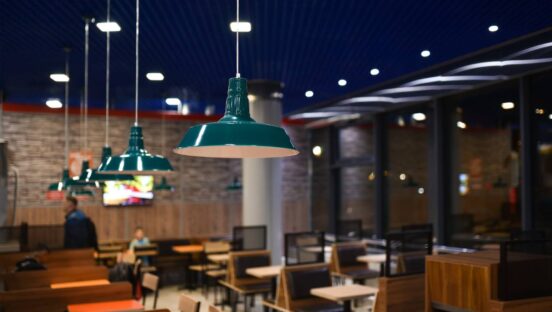It was the end of an era for Domino’s at the close of Q3.
Domestic same-store sales fell 1.9 percent in the period, meaning the streak of 41 straight quarters of positive comps is now over. But context is important—the pizza chain was rolling over a 17.5 percent increase in Q3 2020, which was the highest same-store sales growth achieved in a quarter since the brand became a publicly traded company in 2004.
Domino’s comps increased 15.6 percent on a two-year stack. While impressive, it’s still a deceleration from Q2, when same-store sales lifted 19.6 percent over the past two years. Corporate Controller Jessica Parrish said the decline was driven by lower order counts, which were pressured by a “very challenging” staffing environment. The labor crunch in many cases resulted in shortened operating hours and issues with customer service.
Parrish also noted the chain had previously benefited from economic stimulus and enhanced unemployment benefits, both of which waned in the third quarter. The $300 boost to unemployment insurance expired nationwide in early September, but more than half of states ended the program in June and July. Increases in average ticket partially offset the lower order volume, as Domino’s continued to see consumers purchase more items per transaction. Ticket growth also benefited from increases to the chain’s transparent delivery fee and product mix.
“We believe these challenges posed a more significant headwind on orders and sales during the third quarter than they did during the first half of this year,” said CEO Ritch Allison during the brand’s Q3 earnings call.
When it comes to resolving staffing issues, Allison said it’s important to distinguish what Domino’s can’t control, like Americans removing themselves from the workforce during COVID, the expiration of economic stimulus, and decreases in immigration.
READ MORE: Restaurant Recovery Loses Valuable Momentum
However, within the chain’s control is a new applicant tracking system—which rolled out a few weeks ago—that eases the hiring process. The corporate team is also sharing operational best practices to eliminate labor-intensive tasks inside stores, such as pre-folding boxes.
In corporate locations specifically, Allison said, the company deployed “meaningful increases” in wages and is piloting new approaches to onboarding, training, and development. Although the CEO doesn’t have clear sight into what all franchisees are implementing, he’s heard anecdotally operators are following similar practices.
“Frankly with the profitability levels that we have in our stores, we are much better positioned than many players in the restaurant industry to be able to invest in our teams,” Allison said.
Additionally, Domino’s is looking to streamline labor with elevated technology. Inside units, the chain’s NextGen POS system makes it easier to manage transactions and shrinks the learning curve for new employees. Outside, supply chain centers are being filled with equipment that reduces the amount of labor required to produce dough balls and manage distribution.
Allison also, once again, stressed the need for Domino’s to keep drivers in cars, thereby increasing deliveries per hour and potential wages. The technology underpinning Carside Delivery will prove crucial in that endeavor, the CEO said.
“If we can identify when a customer pulls into the parking lot and run a pizza out to that customer’s car, there’s no reason why—and we’re doing it in a lot of stores around the country—no reason why we can’t just run pizzas out to drivers’ cars, as well,” Allison said.

While delivery same-store sales remained significantly above 2019 levels, the channel did decline relative to 2020. Allison believes the winding down of stimulus and staffing challenges both had a “disproportionate impact” on the delivery business. To boost the channel, Domino’s launched an advertisement denouncing surprise fees instituted by third-party aggregators. During the campaign, the pizza chain is distributing “surprise frees” by giving away a free item for one out of every 14 digital orders. Domino’s and its franchisees plan to offer $50 million worth of free items to delivery customers.
As for carryout, the channel experienced positive same-store sales in Q3 as the brand continued to build awareness for its Carside Delivery. Stores have consistently met the two-minute guarantee, with some locations running under one minute. Allison said carryout will be a priority, especially since each transaction requires a significantly lower amount of labor.
“When we look at our carryout order counts, we are still not quite back to where we were two years ago on carryout order counts despite having positive carryout same store sales in the third quarter,” Allison said. “But it continues to be a focus for us and an area where we continue to see strong opportunity to continue the long-term growth trajectory of that side of the business.”
Amid such an inflationary environment, Allison said the brand is continuing to test price points and find the range that drives long-term profitable growth for franchisees, meaning Domino’s $5.99 and $7.99 platforms are not untouchable.
“While we are wedded to value, we are not specifically wedded to any individual price points,” the CEO said. “And if a better price point yields better long-term profitable growth for our franchisees, that’s where we’re going to go.”
U.S. same-store sales were mostly dragged by company-run units, which declined 8.9 percent compared to a decrease of 1.5 percent at franchise stores. Parrish attributed the spread to heavily urban and higher income footprints of corporate locations relative to a more diverse franchise base, and the fact that company units have been more aggressive with fortressing.

Allison noted that fortress stores do take a number of addresses from existing locations, which affected systemwide comp by about one point in the third quarter, and even higher on the company-run side. However, the CEO added that when Domino’s looks at the cash-on-cash expectations for those openings—both the individual new store and the cluster—it still sees “very positive” returns.
“Fortressing is going to continue to be a key part of our strategy, and I haven’t seen anything in the quarter that gives me any sense that we should be slowing down,” Allison said. “There is still a lot of opportunity out there to continue opening Domino’s stores around the country.”
In fact, the CEO believes the chain has enough white space to reach 8,000 U.S. locations. Domino’s domestic market added a net of 45 outlets in Q3, pushing its total to 6,471. Although the number of net openings was a sequential improvement over the second quarter, the figure was still lower than expected. Allison said cash-on-cash returns remain strong and the pipeline is still robust, but franchisees have experienced delays due to construction, equipment, utility hookups, inspections, and staffing.
Allison acknowledged that Domino’s may continue to see those challenges in the near term, but he knows enthusiasm among franchisees has not disappeared.
“There is still a very healthy demand out there among our franchisee base for unit development,” the CEO said. “I’ve highlighted some of the challenges in the near term of getting these stores open, but when we take a look at the profit, four-wall profitability at the store level and the resulting cash-on-cash returns for Domino’s—which is ultimately what drives the store growth—is still very, very strong.”
Internationally same-store sales grew 8.8 percent, or 15 percent on a two-year basis, extending the streak of positive momentum to 111 consecutive quarters. Global markets opened a net of 278 units in Q3, increasing its footprint to 11,909.
Overall, Domino’s has 18,380 restaurants across the world.
The chain earned $998 million in total revenue in Q3, up 3.1 percent year-over-year. The brand also swung a net income of $120.4 percent, an increase of 21.3 percent compared to 2020.







